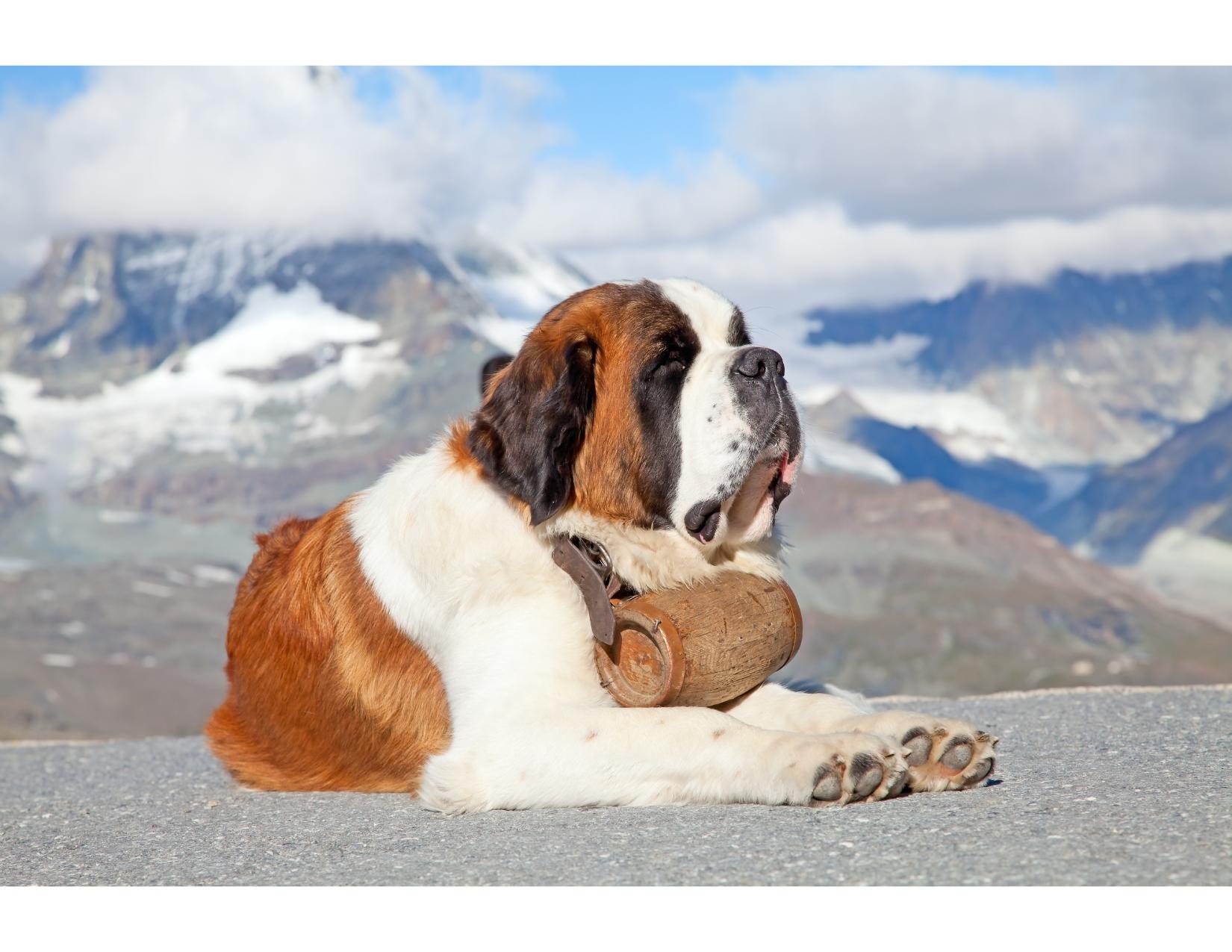SAINT BERNARD
| Group: | Working |
|---|---|
| Size: | Giant |
| Temperament: | Friendly, Charming and Reliable |
| Height: | 28-30 inches (male), 26-28 inches (female) |
| Weight: | 60-80 Kg (male), 55-65 Kg (female) |
| Life Expectancy: | 8-10 years |
| Origin: | Switzerland |
| Coat Length: | Short-Medium |
| Coat Type: | Smooth |
| Color: | White Brindle White & Brindle |
About
Saints' enormous head has a wrinkled brow, a short nose, and dark eyes, which combine to give him the clever, kind countenance that stranded Alpine tourists appreciated.The Saint Bernard is affectionate and completely trustworthy, among other qualities. It moves through life at a leisurely pace and is placid. Due to its enormous size, the Saint Bernard is relatively uncommon as a house dog; the amount of space required to accommodate its sheer bulk cannot be overestimated; food costs are another important factor. The two coat varieties are smooth and rough.
Nutrition
The Saint Bernard should do well on high-quality dog food designed for big dogs, whether professionally manufactured or homemade. Meals should be nutrition packed so that your St. Bernard receives all of the building blocks for good health without consuming a lot of empty calories. They require a nutrient-dense diet rich in high-quality protein, moderate-to-low complex carbs, and moderate fats. It should also be a diet high in antioxidants, vitamins, and minerals. At all times, clean, fresh water should be provided.
Ideal Meal Breakdown
Protein
29
Fat
20
Carbohydrates
43
Others
8
Exercise
Saint Bernards only require light to moderate exercise, but it's crucial that they get it in order to avoid obesity. Their joints are strained when they carry too much weight, which can result in arthritis or orthopedic issues. Up until he reaches adult size, you should limit the amount of exercise you give your Saint Bernard puppy. Avoid allowing him to gain weight too quickly or to run or jump on slippery surfaces. That practically begs for hip issues. Heatstroke and heat exhaustion are common in Saint Bernards. Make sure they always have access to fresh water and shade, and avoid letting them exercise during the hottest part of the day. The symptoms of fatigue and heat exhaustion include heavy panting, dark-red gums, weakness, and collapse.
Grooming
The short, smooth coat of the Great Dane doesn't shed much for the majority of the year, but given the size of the dog, this can still add up to a fair amount of hair. The least amount of shedding can be achieved by brushing your dog once a week with a medium-bristle brush, a rubber grooming tool or mitt, or a hound glove. However, hair loss will be more severe once or twice a year during shedding season, making daily brushing ideal. Rarely, unless they get into something messy, do Great Danes require a bath. Like all breeds, the Great Dane needs to have its nails cut regularly because they can become painful and interfere with their ability to run and walk.
Training
Early training is crucial because an untrained Saint can cause havoc in your home and drag you down the sidewalk in his eagerness to greet people. Train your Saint Bernard in a joyful and carefree manner. Establish ground rules and be consistent in your demands that he abide by them. Breeders will advise crate training as a crucial tool. It helps with housetraining, protects your dog or puppy and your possessions, and provides a secure haven where your Saint Bernard can hide out when he's feeling stressed out or exhausted. Never use a crate as a means of punishment; instead, teach your dog to view it as a cozy haven.
Health
Saints are generally healthy, but like all breeds, they are predisposed to certain illnesses like hypothyroidism,eye disease, hip dysplasia, and elbow dysplasia.Bloat, a sudden, life-threatening gastrointestinal ailment, can occur in large and deep-chested breeds. Owners of Saint Bernards should be aware of the warning symptoms and what to do if they appear.A Saint can tolerate hot temperatures as long as he has a cool place to rest and plenty of water, but transitioning from air conditioning to severe heat can be dangerous.
History
The St. Bernard is a breed of dog with a rich and fascinating history that spans centuries. Originating from the Western Alps of Switzerland, this majestic breed was bred by monks at the Hospice of St. Bernard to assist in their rescue missions in the treacherous mountain passes. The St. Bernard's strong build, thick fur, and keen sense of smell made it the perfect rescue dog, capable of finding lost or injured travelers buried under snow and guiding them back to safety. As word of their heroic deeds spread, the St. Bernard became one of the most beloved and respected breeds in the world. They were soon recognized for their gentle nature, loyalty, and bravery, making them a favorite of families and individuals alike. Despite the challenges of modern times, the St. Bernard has managed to maintain its place as one of the world's most beloved dog breeds. Today, they are still used as rescue dogs, but they are also beloved pets, known for their loving and affectionate personalities.
